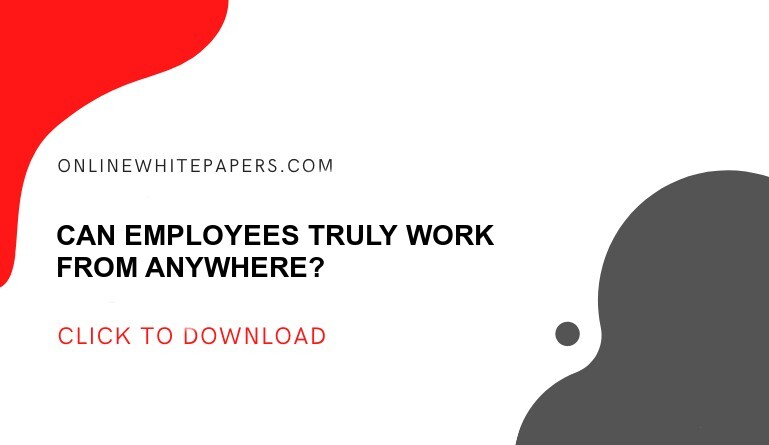Employee engagement is a workplace strategy that refers to employees’ mental and emotional bonds with their workplaces. According to research, companies with highly engaged staff are 17 percent more productive and 21 percent more profitable.
It is aimed at increasing an employee’s emotional commitment to the organization, their job responsibilities, their position within the company, their coworking atmosphere, and the company culture.
In the Post Pandemic era, with remote working as the only substitute, Harvard Business Review(1) revealed that two-thirds of remote workers reported disengagement. More than one-third reported disconnection with their co-workers.
( Also Read: 18 Reasons to Consider Remote Employees in 2021 )
As per the Igloo survey(2), over 70% of remote workers feel alienated from their company. As a result, employees most likely leave the company leading to increased turnover. The key to unlocking the solution for all the mentioned issues lies in a comprehensive employee engagement program.
Despite the lack of an accurate parameter to quantify employee engagement’s effectiveness in organizational growth, projections, and analysis based on KPIs such as employee turnover, internal promotion could lead to calculable data.
Hence, employers must devise a straightforward employee engagement program for remote workers to build a professional and emotional strength fabric that increases positivity and productivity and eliminates burnouts in the decentralized work environment.
How Can You Keep Remote Employees Engaged?
Remote employee engagement demands a strategic approach and a long-term commitment to the team. Employee engagement is the driving force that enables increased efficiency, improved customer service, retention, and high returns.
Remote workers can be kept engaged by including the following measures.
-
Regular One-on-One Meetings
The remote employee attends one-on-one meetings to provide feedback, update information, resolve issues, and assist colleagues in progressing together. Two people in an organization, usually a manager and an employee, perform this routine check. Regular one-on-one meetings are a proactive method that lets quick decisions and timely responses to any issue before it escalates into a crisis.
When all personal or professional issues are respectfully listened to, employees feel connected to the organization. The program assists the remote team members to feel confident that at the end of each meeting, none of their critical issues or key subjects will remain unaddressed.
Hence, setting up an employee meeting with the immediate supervisor to discuss work candidly is a good trait of employee engagement. Messaging and Social Collaboration Tools such as Slack and Zoom calls are the enablers that manifested remote meetings.
-
Sharing Work Updates
Employers or managers must share work updates to keep everyone informed. With workers working from home, employers now face a new challenge: keeping everyone informed about changes in the business, initiatives, and progress, as well as real-time business news that may affect the company.
Hence, empower the employees with access to a steady stream of relevant corporate updates through daily calls, weekly stand-ups, and video conferencing.
While sharing updates, ascertain that the information is distributed over all the designated channels. Technology cohorts such as Monday.com(3) empower both the employer and employee to share work-related updates online. Such tools are agile online project management systems that ensure advancement.
-
Frequent Reminders of the Purpose
Simple reminders have been suggested to be helpful because they operate as cues to prevent potential memory failures. According to numerous researches, people have a favorable attitude about receiving a reminder. Sometimes, a caution statement keeps the employee notified about the priority of commitments or activities. Reminders also inform that the recipient has reached or exceeded the set limit and that ignoring it could result in severe consequences.
Effective reminders are short and sweet. Management should create a crisp headline that should be direct and easy to understand for the receiver. Keep it brief and include a call to action in the message.
Work-centric triggers include checking the company’s primary work communication tools for announcements, validating presence through the work communication tool’s status feature, and calling or email the client to keep them prepared and prompt.
Personal triggers such as microbreaks should be taken regularly, follow pandemic rules, maintain social distancing, and use the mask to reassure employees that their employer cares about their overall well-being.
-
A Forum for Social Interactions
Remote employees nowadays, particularly millennials, consider their professions to be significant indicators of their identity. They build connections with co-workers inside and outside of the office.
They talk about work and workplace concerns with their colleagues and share ideas about new trends and techniques. Due to this close interaction, social engagement has become an indispensable part of the employee engagement strategy.
Such forums foster a sense of fellowship and trust that carries over into the professional realm in the social sphere. As a result, interactions are smoother, and understanding is improved, resulting in increased productivity. Platforms such as Twitter, Linkedin, and Facebook are now frequently used in the workplace to facilitate discussion, support, advice, and training for employees.
Case studies-based forums and real-life training from industry experts are the most effective engagement platforms that allow leaders to share their successes and failures.
The ideal forum is the one that answers all of the employee’s queries about the company and its operations.
-
Organized Team Building Activities
Team building for informal or fun activities reduces competition and encourages teammates to accept each other’s talents and faults. They work together with open hearts and a stronger camaraderie to attain a common objective. At work, this informal bonding produces extraordinary effects.
Trust and acceptance are built through team-building events, and employees feel more at ease working together and staying longer at the company. Participation in team-building fun activities makes them more creative and cooperative.
Problem-solving exercises organized for the remote workforce can be a fantastic source of pleasure and save them from burnout. Team-building exercises that will make your remote workforce think and come up with innovative answers to various difficulties. These activities boost engagement, improves communication cultivate leadership skills.
Schedule a meeting that your entire team believes will be ordinary. Deliver a dull, jargon-filled speech with a few random irrelevant lines thrown in for good measure. Finally, test your employees to discover who was paying attention.
For business simulation activity, create a hypothetical business challenge, collaborate online, and give share specifics about the activity, the regulations, the objectives, besides the deadline and let them try their problem-solving skills. Employers may also request remote teams to discuss new ideas and scores.
-
Employee Recognition
Recognition is the significant driving force besides incentives for remote employees. Employee recognition, or Social Recognition, is the process of publicly appreciating the employees for who they are and what they do. This is one of the essential components in boosting workplace engagement, productivity, and employee retention.
Incentives, written and verbal accolades besides birthday wishes are few gestures that make the employee feel appreciated. For healthy peer-peer and manager-employee relationships, it’s critical to recognize remote personnel. Appreciation expressed frequently strengthens ties and improves communication.
Kudos(4) on LinkedIn Send praises to big or small teams by selecting a connection or many people. It allows you to choose, from different kudos categories, such as “Team Player,” “Amazing Mentor,” and “Inspirational Leader,” and broadcast.
Final Thought
It is essential to know that one workplace’s strategy does not apply to the other. Therefore, management must pay close attention to the pattern before constructing an environment. Employees will set the tone themselves; the employer’s role is to approve and nurture an environment where teammates may express their ideas.
Besides this, technology played the most significant role in laying a solid platform and made employee engagement a manageable task in the remote works environment. This entire decorum of emotion blended with occupation and technology leads to a better grasp of the company’s fundamental values and enhances the company’s supportive and caring image.
Other Useful Resources:
The 3 Challenges in Creating Remote Team
Remote Workforce Project Management Tools to Know
Tips to Make Remote Employees Feel Included in Meetings
The New Elevated Workforce of Remote Workers: Experts Give Advice for WFH Teams and Companies
Meeting the Remote Work Challenge: 4 Best Practices to Secure Employees and Set Them Up for Success








